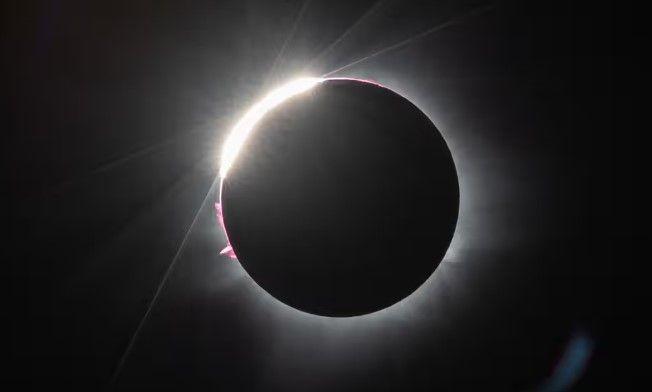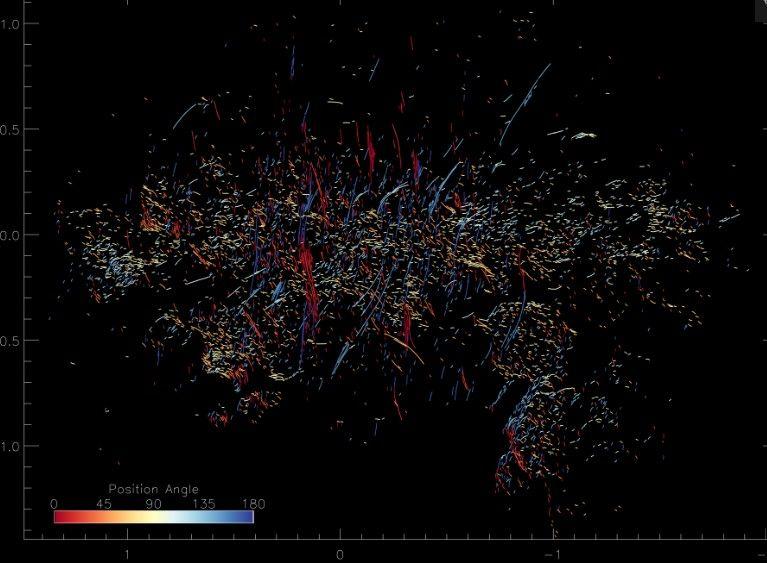INTUSK MAGAZINE
TO THE CORE OF YOUR HEART
Euclid Space Telescope Launched to Explore Dark Matter
July 8, 2023
A European-built orbital satellite was sent into orbit from Florida on a mission to illuminate the mysterious cosmic phenomena known as dark energy and dark matter, which are thought to be responsible for 95% of the universe that is currently understood.
The "Euclid" telescope, named after the "father of geometry" in ancient Greek mathematics, was launched into space in the cargo bay of a SpaceX Falcon 9 rocket at around 1500 GMT from Cape Canaveral Space Force Station.
New discoveries from the six-year, $1.4 billion European Space Agency (ESA) mission are anticipated to revolutionise astrophysics and perhaps our understanding of the very nature of gravity.
Euclid was to be released from the Falcon after a short flight into space for a month-long journey to its destination in solar orbit nearly 1.6 million kilometres from Earth - a position of gravitational stability between the Earth and the sun known as the Lagrange Point Two, or L2.
From there, Euclid is planned to investigate the development of what astronomers refer to as the "dark universe," using a wide-angle telescope to scan galaxies as far away from Earth as 10 billion light years across a vast region of the sky beyond our own Milky Way galaxy.
Additionally, the two-ton spacecraft is outfitted with instruments that will measure the infrared light from those galaxies' intensities and spectrums in order to precisely calculate their distances.
Two fundamental elements of the dark universe are the mission's primary areas of focus. One is dark matter, which is thought to be the invisible but theoretically significant cosmic framework that gives the cosmos its shape and texture. The other is dark energy, a similarly enigmatic force that is thought to be the cause of the universe's long-term acceleration of expansion, as discovered by scientists in the 1990s.
The possibilities of the mission are reflected by the enormity of Euclid's inquiry. Scientists estimate dark energy and dark matter together make up 95% of the cosmos, while ordinary matter that we can see accounts for just 5%.
NASA provided photo detectors for the near-infrared instrument on Euclid, which was entirely designed and built by ESA. More than 2,000 scientists from 13 European countries, the United States, Canada, and Japan make up the Euclid Consortium as a whole.
The mission, which had been in the works for a decade, was originally intended to launch into space using a Russian Soyuz rocket. However, after war broke out in Ukraine, launch plans were changed to SpaceX, Elon Musk's California-based company, because no slot was immediately available from Europe's Arianne rocket programme.
While the NASA-launched James Webb Space Telescope enables astronomers to focus on specific objects from the early universe with unprecedented clarity, the goal of Euclid is to meticulously map a vast swath of the observable universe in 3-D, totaling more than 1 billion galaxies, in order to reveal the hidden fabric and mechanics of the cosmos.
The information will be gathered as Euclid surveys the last 10 billion years of cosmic history over a third of the sky, looking outward and backward in time to the period of the universe known as "cosmic noon," when the majority of stars were forming.
The Euclid Space Telescope represents a remarkable leap forward in our quest to understand the mysteries of the universe. With its mission to unravel the secrets of dark matter and dark energy, as well as probe the formation and evolution of galaxies, Euclid holds the promise of transforming our understanding of the cosmos.
Scientists are eagerly awaiting the data flood that will reveal the mysterious nature of dark matter and dark energy and shed light on the complex processes that have shaped our universe over billions of years as the telescope starts its journey through space. A deeper understanding of our existence and our place in the vast cosmos will likely be revealed by the Euclid Space Telescope.



